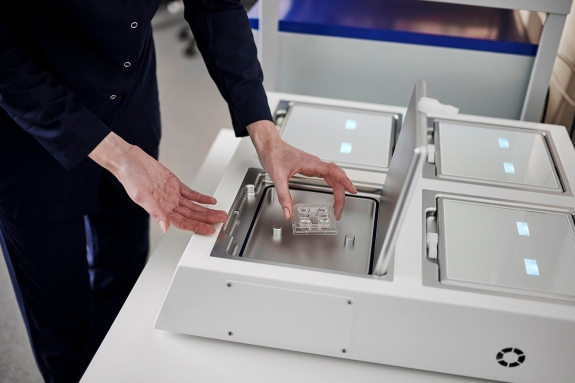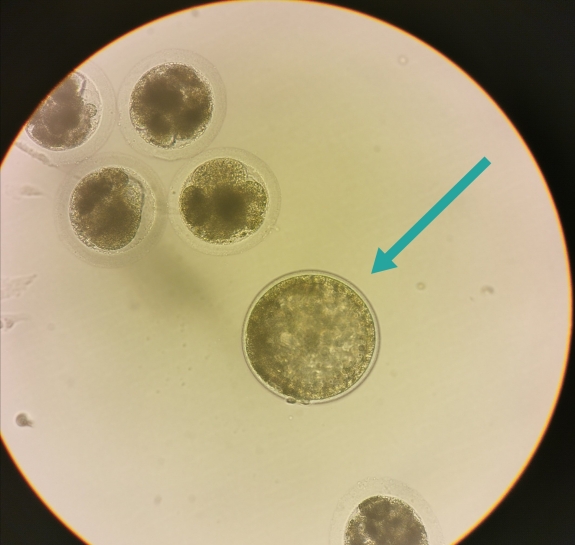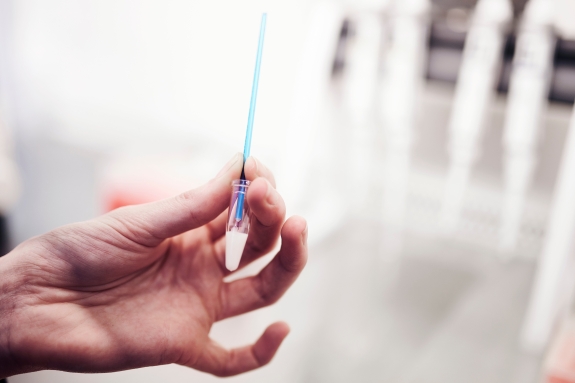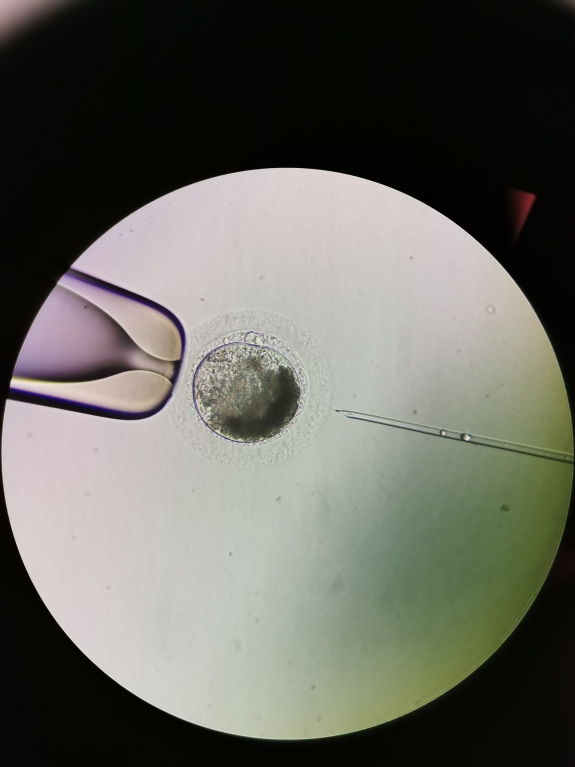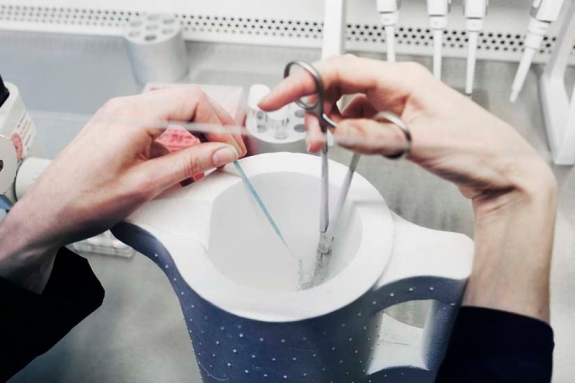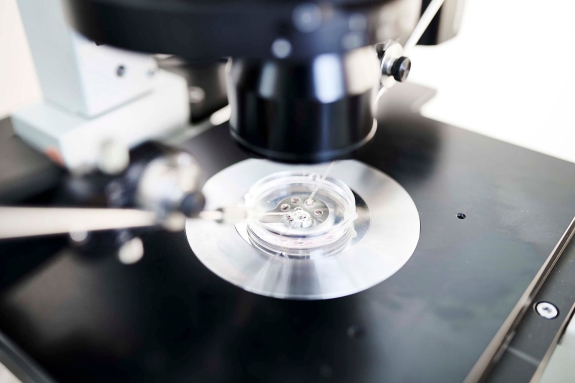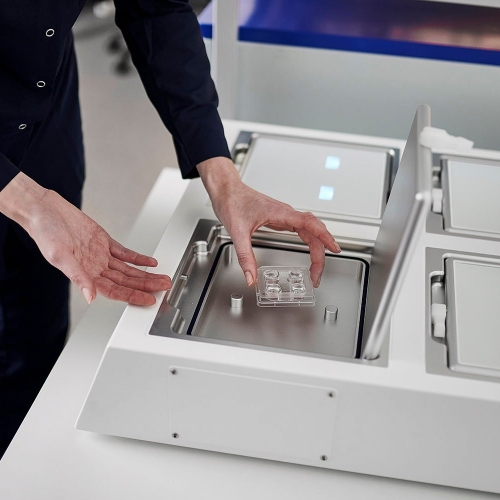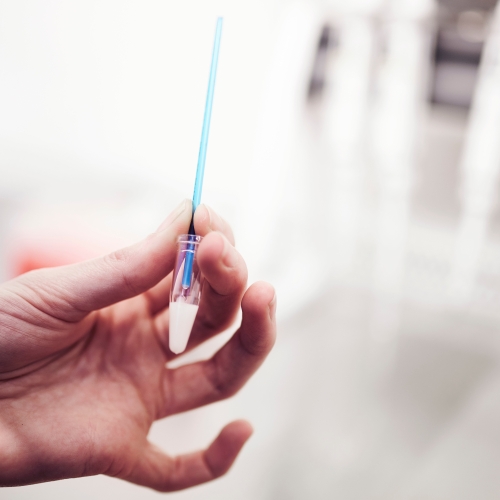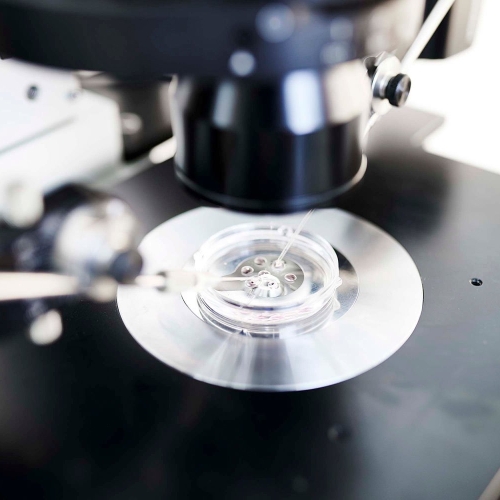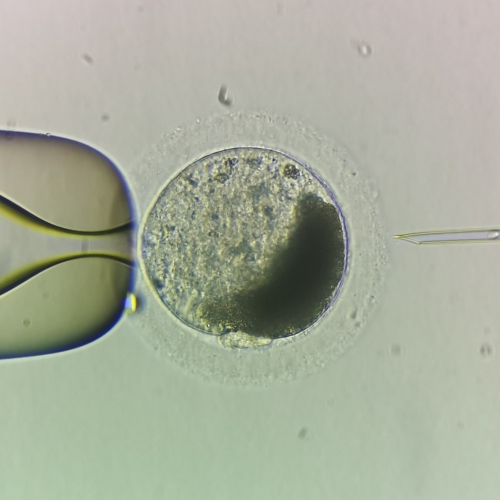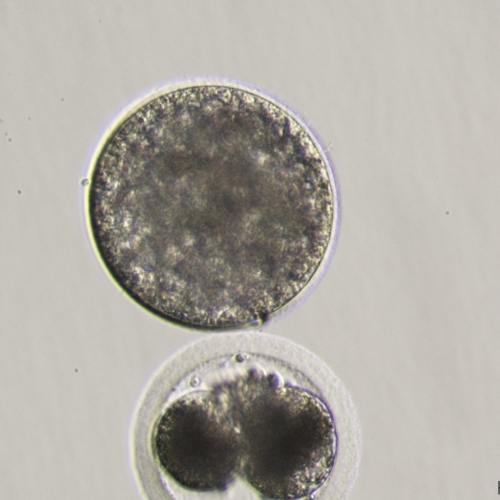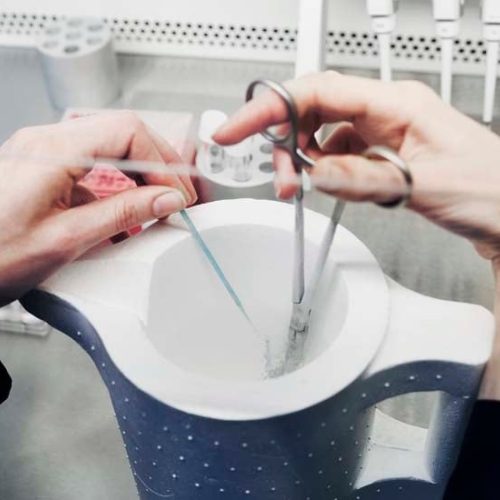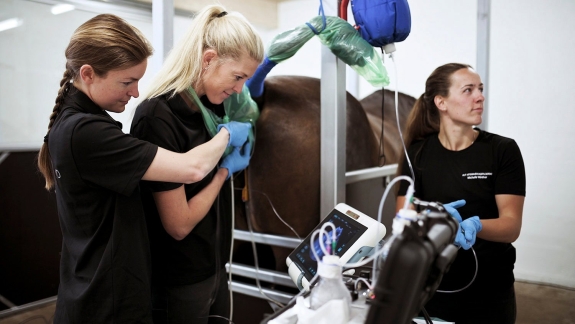ICSI is the abbreviation for intracytoplasmic sperm injection, which denotes the actual fertilization in which one sperm cell is injected into the oocyte.
In the process, we use a so-called micromanipulator. Two joysticks are attached to this. One keeps the oocyte fixed and the other guides the pipette in which the sperm lies. Briefly described, ICSI is merely a fertilization of an oocyte under a microscope. However, it is not that simple!
After the oocyte pick-up
The eggs, also called oocytes, are produced in the horse’s ovary. In fact, all the oocytes that the horse carries are already formed before it is born. The oocytes are formed in the very early embryonic stage of the mare. The oocytes mature individually. During the oocyte pick-up, we aspirate oocytes in different stages of the maturation process. Common to them is that they have to go through a maturation phase before they are ready to be fertilized. About 60% of the oocytes recovered after OPU mature and are ready to be fertilized.
ICSI embryo
Once the oocytes are fertilized, they are placed in a special media and then in an incubator that mimics the conditions of the mare’s fallopian tube.
Over the course of 7-10 days, we are able to see if the fertilized oocytes have developed into an embryo. The embryo can either be transferred directly to a synchronized recipient or frozen and then thawed when a suitable recipient is ready. The freezing process does not affect the pregnancy, therefore most of the embryos are frozen.
The picture shows a nice ICSI embryo (arrow) and four other fertilized oocytes that have started to divide but have since stopped.
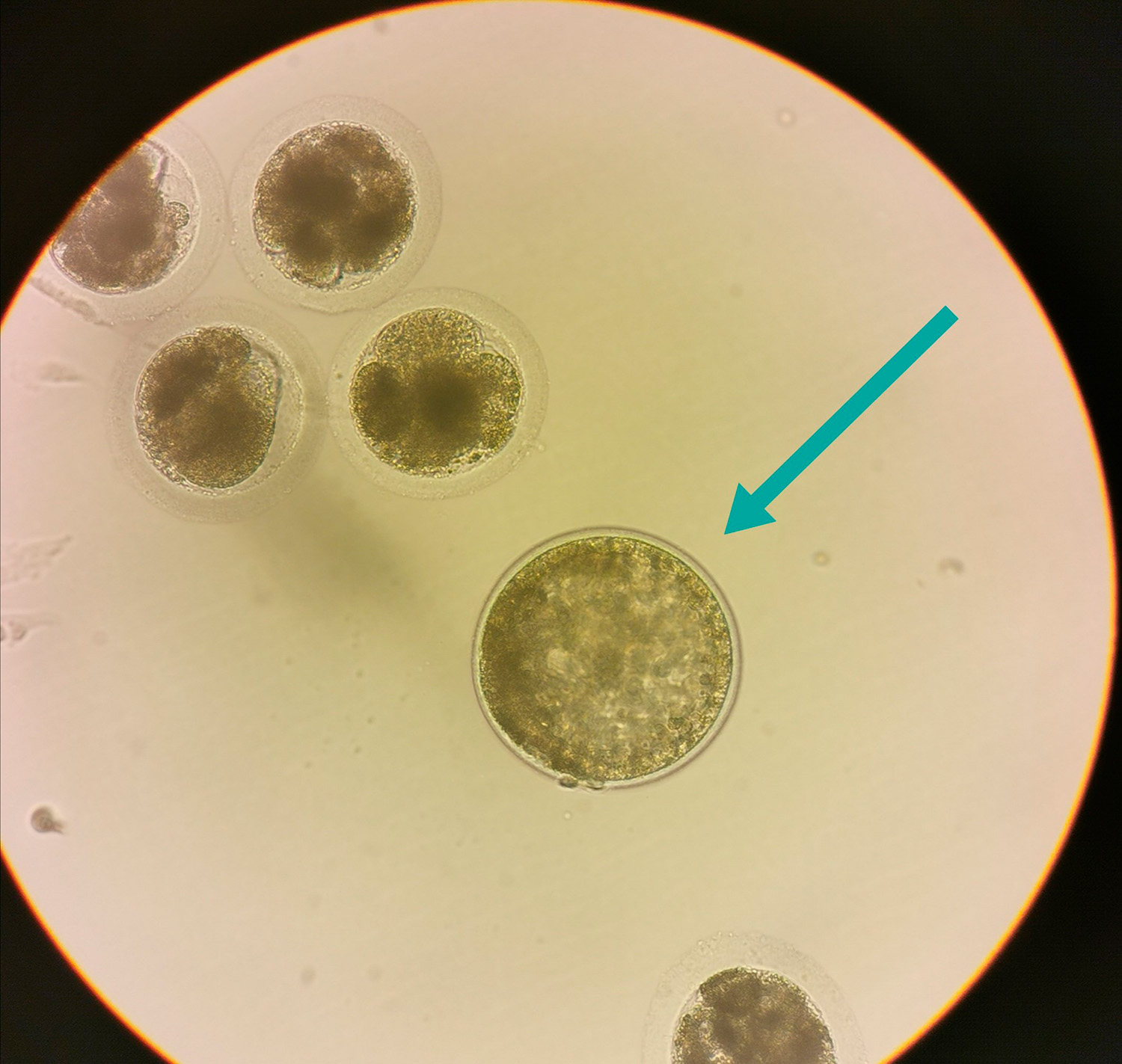
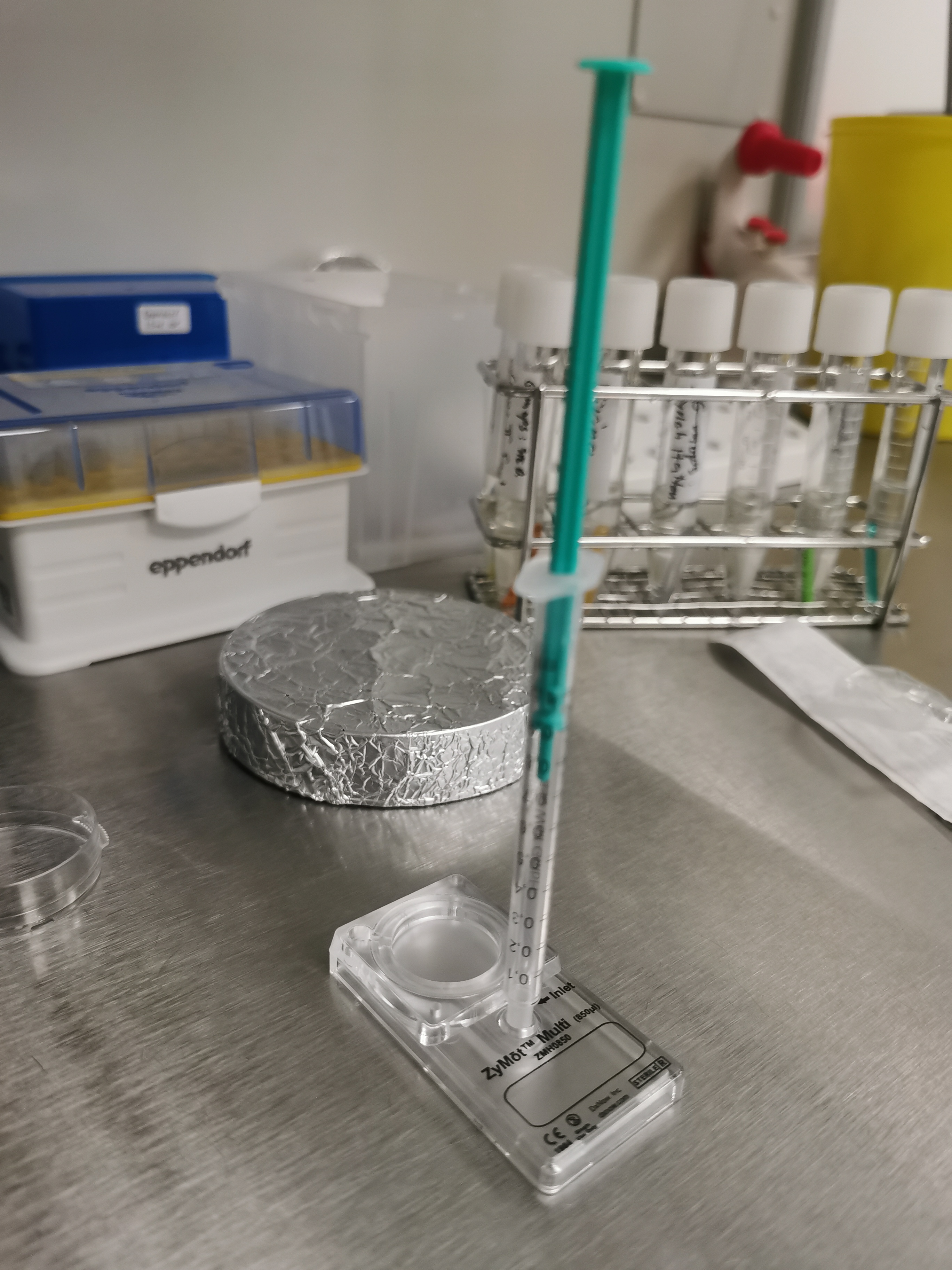
Semen
Purification of semen
Before we fertilize the oocytes, the semen is purified. There are many different methods for this but the principle is the same – to sort the semen and remove bacteria and dirt. In our laboratory, we are also able to sort the sperm according to DNA defects (called a low DNA fragmentation). The result is that only the best sperm are used to fertilize the oocytes. This option is absolutely essential for stallions where the quality of the semen is questionable. However, you still need to keep in mind that the quality of the mare’s oocytes also plays into the overall result.
What kind of semen can be used?
When we do OPU in the winter and subsequently fertilize the oocytes, we use frozen semen. The frozen semen is stored in liquid nitrogen, which makes its lifespan close to unlimited. In the spring and summer, when the stallion stations around the world are active, we often use chilled semen. We have a large selection of stallions available from Danish and foreign stallion stations. Feel free to contact us for further information. It is important that the sperm is ready when the oocytes are mature and ready for fertilization. If we don't have the semen in stock, we have transport containers available for rent.
How much semen is necessary for ICSI?
As ICSI only uses one sperm cell for each oocyte, this process offers extremely good opportunities to use sperm from stallions with only a sparse amount of sperm available or sperm of inferior quality.
Semen from stallions is typically packed and frozen in straws with approximately 100 million sperm cells. A standard insemination dose is usually between 4-10 straws. If you use an ordinary straw, it is not necessary to thaw the entire straw to fertilize the oocytes from one OPU session. We therefore cut a small section of the straw under liquid nitrogen. This means that we can use the same straw again and again. There can be up to 8-10 sections” in one straw – that is enough semen for 8-10 OPU sessions. If we use the straw from a stallion with good sperm quality, which is frozen as ICSI doses, we can often still just cut a piece of each straw, even if the semen is less concentrated. However, be aware that there is also semen that is made as regular insemination doses, subsequently thawed and frozen again in less concentrated doses for ICSI. The quality of these straws is questionable and we advise against buying these.
If only a sparse amount of semen is available, some stallion stations will require that the semen is only used for ICSI.
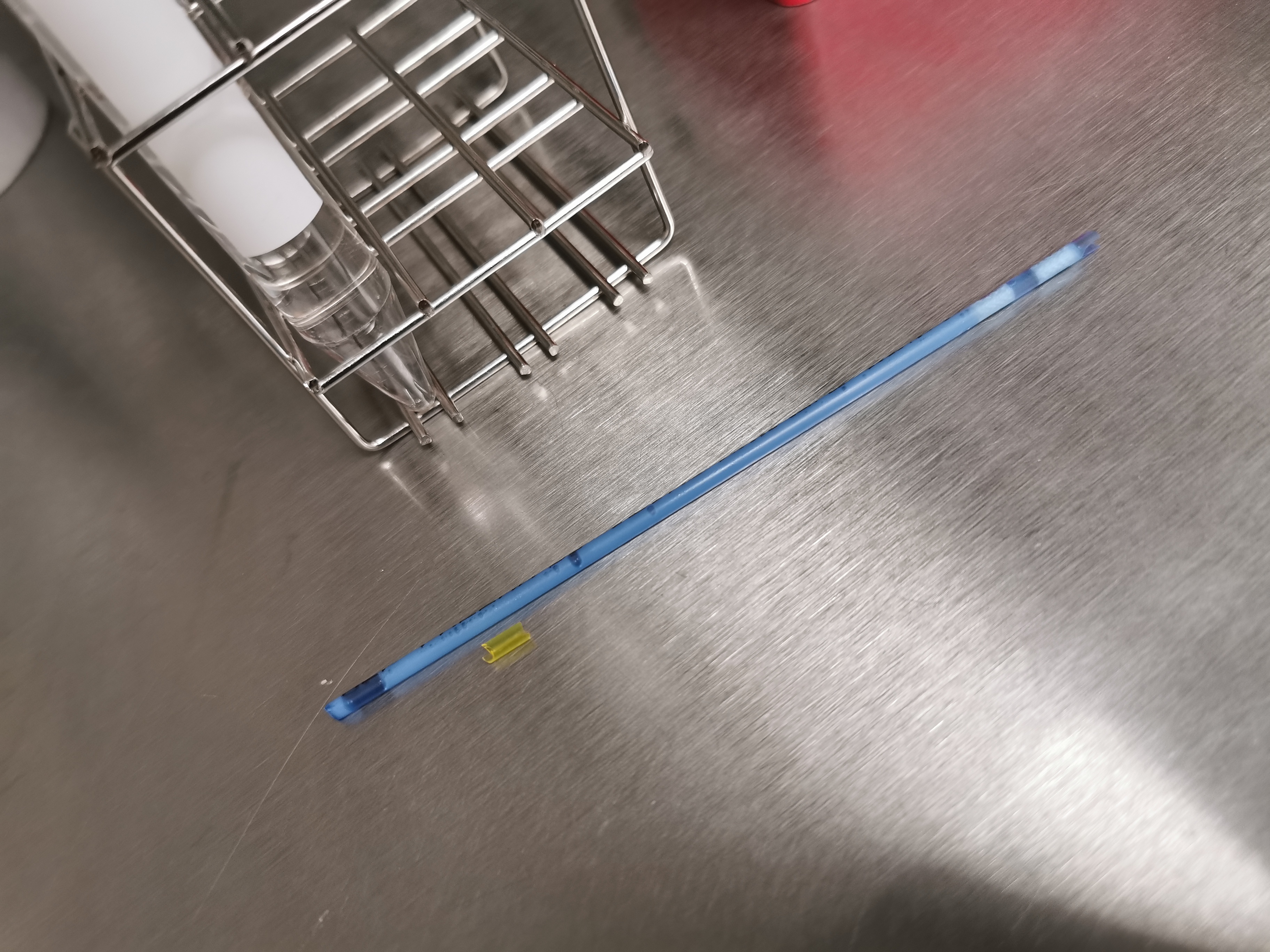
Conditions for semen used for ICSI
Please note that the different stallion stations have different payment terms for using semen for ICSI.
We have a wide selection of frozen semen in stock from various stations, both Danish and foreign, so feel free to contact us and learn more.
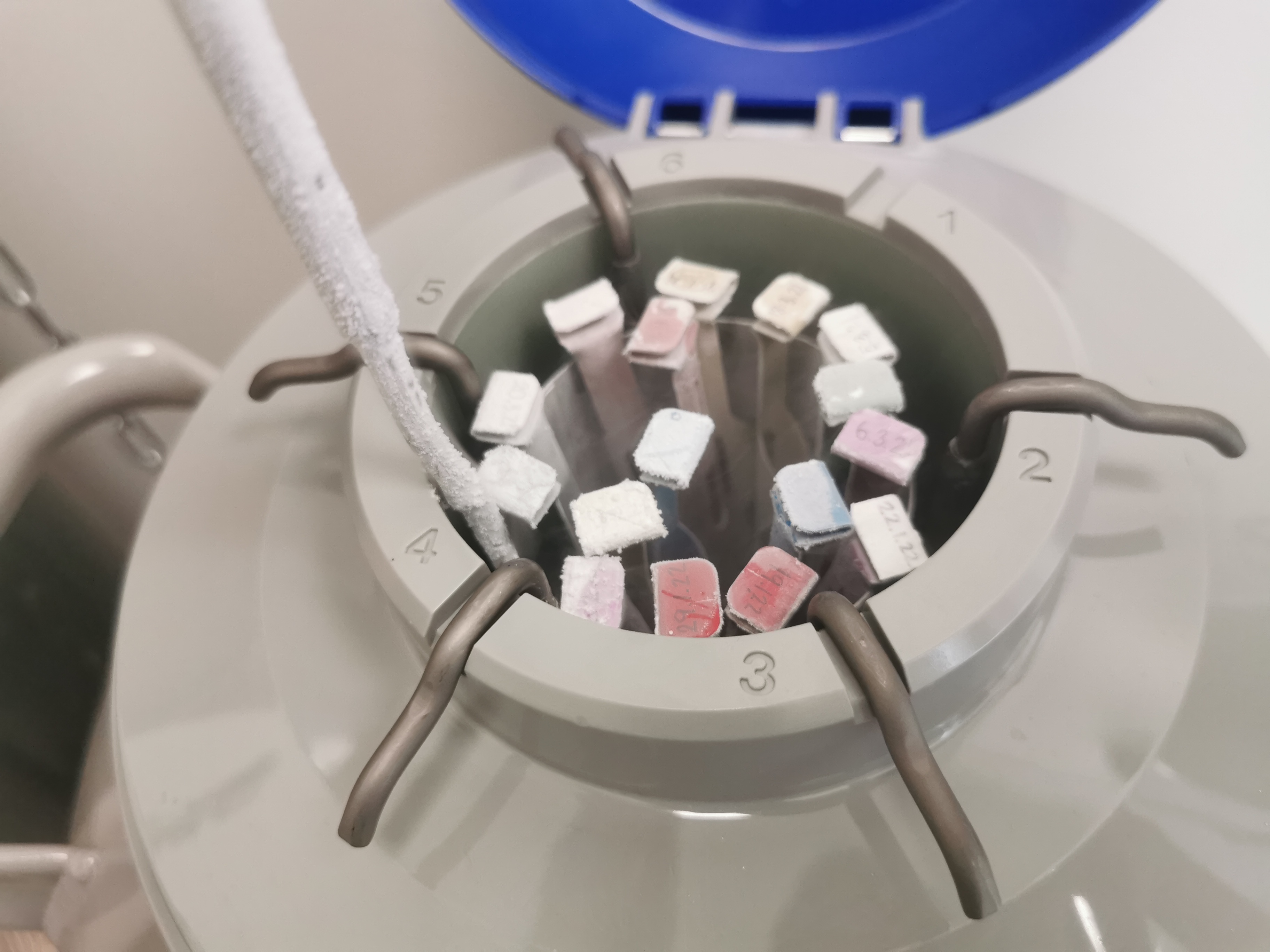
Freezing of ICSI embryos
Most of the ICSI embryos we make in our laboratory are frozen by vitrification. Vitrification is the gentlest way to freeze embryos. The freezing process does not affect the pregnancy rate due to the small size of the embryos. Vitrification is a process in which the embryo is exposed to a higher concentration of cryoprotective substances. After this step, the embryo is transferred directly to liquid nitrogen.
The vitrification of embryos allows a great deal of flexibility in finding the right recipient. Once the embryos are in liquid nitrogen, they can be stored for decades.

